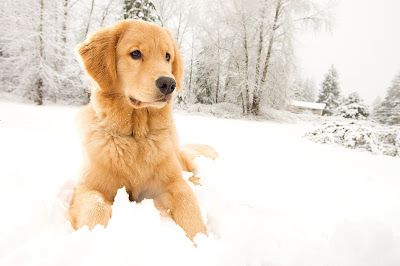Have you noticed that you’ve started to pile on more layers when stepping out of your front door and that winter seems to be longer this year? Well, these colder days and nights can really affect our dogs too.
Whilst their paws are exposed to the elements and toxic chemicals, their paw pads are at risk of drying and cracking and in extreme cases, chemical burning. Thankfully, there are a few things that we, as owners, can do to help combat these possibilities and ensure our dog’s paws remain healthy as the colder weather continues.
Prepare the Paw
Find a balm, or wax that suits your pet’s needs and then begin to prepare the paw for the balm. Many pet owners recommend Vaseline, but it’s important for the balm to be suited to your pet.If your dog has long hair, use a clipper to make sure that the hair between the paw pads is short which will help prevent ice from forming in between and around the pads. This can be extremely painful for your pet and result in them becoming reluctant to go outside in colder weather.
Apply the wax before you go out for a walk in a thin layer and afterwards wipe your dog’s paw with a warm cloth. This will help to remove any snow, or ice. Follow this with applying further wax to stop the paw from drying out.
Avoid using salt and de-icer
Not only is salt bad for the paws and makes them dry out, it can also be toxic if ingested by your furry loved one. This is also the case for chemical de-icers used to thaw your car mirrors.Try an alternative like popping a cover over your windscreen to stop ice from forming, and make sure you’re aware of treated areas so that your dog’s paws aren’t victim to salt and de-icer.
If your dog’s paws show major signs of irritation, like rashes or bleeding, it’s best to get in contact with your pet insurance provider who will refer you to a vet if needed.
Shorter walks are preferable
Dogs who are left in the cold for a lengthy period of time are at a higher risk of frostbite on paws, or even hypothermia. With this in mind, it may be an idea to go on shorter and more frequent walks with your pet, rather than one long walk to keep them from spending hours in the cold conditions.Let us know how you treat your dog’s paws in this cold weather over on our Facebook page, or follow us on Twitter and tweet us your thoughts!

No comments:
Post a Comment